Download SF2 Series Instruction Manual
Transcript
SF2 Series Instruction Manual INDEX 1. GENERAL INFORMATION .......................................................................................... 1 TM 1.1. General description of the SAFEasy safety light curtain.................................. 1 1.2. How to choose the device ................................................................................... 3 1.3. Typical applications ............................................................................................. 5 1.4. Safety information ............................................................................................... 6 2 INSTALLATION MODE................................................................................................ 7 2.1. Precautions to be observed for the choice and installation of the device .......... 7 2.2. General information on device positioning .......................................................... 8 2.2.1. Minimum installation distance .............................................................. 10 2.2.2. Minimum distance from reflecting surfaces .......................................... 12 2.2.3. Installation of several adjacent safety light curtains ............................. 14 2.2.4. Use of deviating mirrors........................................................................ 15 3. MECHANICAL MOUNTING ....................................................................................... 16 4. ELECTRICAL CONNECTIONS ................................................................................. 18 4.1. Notes on the connections.................................................................................. 19 4.2. TEST timing diagrams....................................................................................... 20 5. ALIGNMENT PROCEDURES .................................................................................... 23 5.1. Correct alignment procedure (AUTOMATIC RESTART) .................................. 23 5.2. Correct alignment procedure (MANUAL RESTART) ........................................ 25 6. RESTART MODE ....................................................................................................... 27 7. DIAGNOSTIC FUNCTIONS ....................................................................................... 29 7.1. Visualisation of the functions............................................................................. 29 7.2. Fault messages and Diagnostics ...................................................................... 30 8. CHECKS AND PERIODICAL MAINTENANCE ......................................................... 31 8.1. Maintenance...................................................................................................... 31 8.2. General information and useful data ................................................................. 32 8.3. Warranty............................................................................................................ 32 9. TECHNICAL DATA .................................................................................................... 33 10. LIST OF THE AVAILABLE MODELS........................................................................ 34 11. DIMENSIONS ............................................................................................................. 35 12. ACCESSORIES.......................................................................................................... 36 Instruction Manual SF2 Series 1. GENERAL INFORMATION 1.1. General description of the SAFEasyTM safety light curtain The SAFEasyTM safety light curtains – SF2 Series – are optoelectronic multibeam devices that are used to protect working areas that, in presence of machines, robots and automatic systems in general, can become dangerous for operators that can get in touch, even accidentally, with moving parts. The SAFEasyTM devices are Type 2 intrinsic safety systems used as accident-prevention protection devices and are manufactured in accordance with the international Standards in force for safety, in particular: CEI EN 61496-1: 2004 CEI IEC 61496-2: 1997 Safety of machinery: electrosensitive protective equipment General requirements and test. Safety of machinery: electrosensitive protective equipment Particular requirements for equipment using active optoelectronic protective devices. The device, consisting in one emitting and one receiving unit housed inside strong aluminium profiles (Fig.1), generates infrared beams that detect any opaque object positioned within the light curtain detection field. The emitting and the receiving units are equipped with command and control functions (no external control unit is required). The connections are made through a M12 connector located in the lower side of the profile. The synchronisation between the emitter and the receiver takes Fig. 1 place optically, i.e. no electrical connection between the two units is required. 1 SF2 Series Instruction Manual The microprocessors guarantee the check and the management of the beams that are sent and received through the units: the microprocessors – through some LEDs – inform the operator about the general conditions of the light curtain and about eventual faults (see section 7 “Diagnostic functions”). During installation, two yellow LEDs facilitate the alignment of both units (see section 5 “Alignment procedures”). As soon as an object, a limb or the operator’s body accidentally interrupts the beams sent by the emitter, the receiver immediately opens the OSSD output and blocks the machine (if correctly connected to the OSSD). Note: The following abbreviations will be used in this manual as they are defined by the Standards in force: AOPD Active opto-electronic protective device ESPE Electro-sensible protective equipment MPCE Machine primary control element OSSD Output signal switching device (switching output) TX Emitting device RX Receiving device Some parts or sections of this manual containing important information for the operator are preceded by a note: Notes and detailed descriptions about particular characteristics of the SAFEasyTM safety devices in order to better explain their functioning; special instructions regarding the installation process. The information provided in the paragraphs following this symbol is very important for safety and may prevent accidents. Always read this information accurately and carefully follow the advice to the letter. This manual contains all the information necessary for the selection and operation of the SAFEasyTM safety devices. However, specialised knowledge not included in this technical description is required for the planning and implementation of a safety light curtain on a power-driven machine. As the required knowledge may not be completely included in this manual, we suggest the customer to contact DATASENSOR Sales Technical Service for any necessary information relative to the functioning of the SF2 series light curtains and the safety rules that regulate the correct installation (see section 8 “Checks and periodical maintenance”). 2 Instruction Manual SF2 Series 1.2. How to choose the device There are at least three different main characteristics that should be considered when choosing a safety light curtain: • The resolution strictly depending on the part of the body to be protected. R = 30mm hand protection Type 2 R = 50 mm R = 90 mm presence control protection (*) safety light curtain models with 50 mm and 90 mm resolution present sensitive areas with inferior resolution with respect to the declared value. The resolution of the device is the minimum dimension which an opaque object must have in order to obscure at least one of the beams that constitute the sensitive area. As shown in Fig.2, the resolution only depends on the geometrical characteristics of the lenses, diameter and distance between centres, and is independent of any environmental and operating condition of the safety light curtain. Fig. 2 The resolution value is obtained applying the following formula: R=I+d 3 SF2 Series Instruction Manual • The height of the protected area It is important to distinguish between “Height of the sensitive area” and “Height of the controlled area” (Fig.3). - The height of the sensitive area is the distance between the lower and the upper limits respectively of the first and the last lens. - The height of the controlled area is the effectively protected area. It delimits the area where an opaque object with larger or equal dimensions respect to the resolution of the safety light curtain may certainly cause the interruption of a beam. Fig. 3 • The safety distance It is important to carefully calculate the distance between the point where the safety device will be placed and the possible danger associated with the machine to be protected (see section 2 “Installation mode” for the calculation of the safety distance). 4 Instruction Manual SF2 Series 1.3. Typical applications The SAFEasyTM safety light curtains are used in all automation fields where it is necessary to control and protect the access to dangerous zones. In particular they are used to stop the moving mechanical parts of: - Automatic machines Packaging machines, handling machines, storing machines Textile, ceramic, wood and leather working machines. Automatic and semi–automatic assembly lines Automatic warehouses In food industry applications, DATASENSOR Technical Service has to verify the compatibility of the material of the safety light curtain housing with any chemical agents used in the production process. The following pictures show some main applications. 5 SF2 Series Instruction Manual 1.4. Safety information The following points must be observed for a correct and safe use of the SAFEasyTM safety device: • The stopping system of the machine must be electrically controlled. • This control system must be able to instantly stop the dangerous movement of the machine during all the phases of the working cycle. • Mounting and connection of the safety light curtain must only be carried out by qualified personnel, according to the indications included in the special sections (refer to sections 2; 3; 4; 5; 6). • The safety light curtain must be securely placed in a particular position so that access to the danger zone is not possible without the interruption of the beams (see section 2 “Installation mode”). • The personnel operating in the dangerous area must be well trained and must have adequate knowledge of all the operating procedures of the safety light curtain. • The TEST button must be located outside the protected area because the operator must check the protected area during all the Test and Reset operations. 6 Instruction Manual 2 SF2 Series INSTALLATION MODE 2.1. Precautions to be observed for the choice and installation of the device • Make sure that the protection level assured by the SAFEasyTM (Type 2) is compatible with the real danger level of the machine to be controlled, according to EN 954-1. • The outputs (OSSD) of the ESPE must be used as stopping devices of the machine and not as command devices. The machine must have a special RESTART command. • The dimension of the smallest object to be detected must be larger than the resolution level of the ESPE. • The ESPE must be installed in a place compatible with the technical characteristics shown in section 9. • Do not place the device, in particular the receiver unit, near any intense light sources. • Strong electromagnetic interferences can compromise the correct functioning of the device. DATASENSOR suggests contacting its own Technical Service when this problem occurs. • The operating distance of the device can be reduced by 50% in the presence of smog, fog or airborne dust. • A sudden change in environment temperature, with very low minimum peaks, can generate a small condensation layer on the lenses and so jeopardize functioning. 7 SF2 Series Instruction Manual 2.2. General information on device positioning The device should be carefully positioned, in order to reach a very high protection standard. Access to the hazardous area must only be possible by passing through the protecting safety light beams. Fig. 4a shows some examples of possible access to the machine from the top and the bottom sides. These situations may be very dangerous so and so the installation of the safety light curtain at sufficient height in order to completely cover the access to the dangerous area (Fig.4b) becomes necessary. NO Fig. 4a Fig. 4b 8 Instruction Manual SF2 Series In normal operating conditions, machine starting must not be possible while operators are inside the hazardous area. When the installation of the safety light curtain very near to the dangerous area is possible, a second light curtain must be mounted in a horizontal position in order to prevent any lateral access (as shown in Fig. 5b). Fig. 5a Fig. 5b If the operator is able to enter the dangerous area and is not detected by the beams, an additional mechanical protection must be mounted to prevent the access. 9 SF2 Series Instruction Manual 2.2.1. Minimum installation distance The safety device must be placed at a specific safety distance (Fig.5). This distance must ensure that the dangerous zone cannot be reached before the dangerous motion of the machine has been stopped by the ESPE. The safety distance depends on 4 factors, according to the EN-999, 775 and 294 Standards: 1 Response time of the ESPE (the time between the effective beam interruption and the opening of the OSSD contacts). 2 Machine stopping time (the time between the effective opening of the contacts of the ESPE and the real stop of the dangerous movement of the machine). 3 ESPE resolution 4 Approaching speed of the object to be detected. Fig. 6 The following formula is used for the calculation of the safety distance: S = K (t1 + t2) + C where: S = Minimum safety distance in mm. K = Speed of the object, limb or body approaching the dangerous area in mm/s t1 = Response time of the ESPE in seconds (see section 9 “Technical data”) t2 = Machine stopping time in seconds. d = Resolution of the system. C = 8 (d -14) for device with resolution ≤ 40mm = 850 mm for device with resolution > 40 mm 10 Instruction Manual SF2 Series Note: The value of K is: 2000 mm/s if the calculated value of S is ≤ 500 mm 1600 mm/s if the calculated value of S is > 500 mm When the dangerous area can be reached through the upper and lower sides of the machine, where devices with >40 mm resolution are used, the height of the uppermost beam shall be ≥ 900 mm (H2) and the height of the lowest beam shall be ≤ 300 mm (H1). If the safety light curtain must be mounted in a horizontal position (Fig.7), the distance between the dangerous area and the most distant optic beam must be equal to the value calculated using the following formula: S = 1600 mm/s (t1 + t2) + 1200 – 0.4 H where: S = Minimum safety distance in mm t1 = Response time of the ESPE in seconds (see section 9 “Technical data”) t2 = Machine stopping time in seconds H = Beam height from ground. This height must always be less than 1000 mm. Fig.7 11 SF2 Series Instruction Manual 2.2.2. Minimum distance from reflecting surfaces Reflecting surfaces placed near the SAFEasyTM light curtains (over, under or laterally) may cause passive reflections. These reflections can compromise the recognition of an object inside the controlled area (see Fig. 8). Fig. 8 However, if the RX receiver detects a secondary beam (reflected by the side-reflecting surface) the object might not be detected, even if the object interrupts the main beam. 12 Instruction Manual SF2 Series It is thus important to position the safety light curtain according to the minimum distance from any reflecting surface. The minimum distance depends on: • Operating distance between emitter (TX) and receiver (RX); • Maximum opening angle of the light beam sent by the safety light curtain, in particular: • - 10° for ESPE Type 2 (± 5° as to the optic axis) reflecting surface distance (mm) reflecting surface distance (mm) The graphic in Fig. 9 shows the data of the minimum distance. 800 700 600 500 400 300 200 100 0 ESPE Type 2 0 1 2 3 4 5 6 7 8 9 10 11 12 13 14 15 16 operating distance (m) Fig. 9 13 SF2 Series Instruction Manual 2.2.3. Installation of several adjacent safety light curtains When several safety devices must be installed in adjacent areas, it’s necessary to prevent the interferences between the emitter of one device and the receiver of another. Fig.10 gives an example of possible interferences between different devices and two pertinent solutions. NO YES YES Fig.10 14 Instruction Manual SF2 Series 2.2.4. Use of deviating mirrors The control of any dangerous area, with several but adjacent access sides, is possible using the linear version without integrated Muting sensors and well-positioned deviating mirrors. Fig.11 shows a possible solution to control three different access sides, using two mirrors placed at a 45° angle respect to the beams. Fig. 11 The operator must respect the following precautions when using the deviating mirrors: • The alignment of the emitter and the receiver can be a very critical operation when deviating mirrors are used. Even a very small angular displacement of the mirror is enough to loose alignment. • The minimum safety distance (S) must be respected for each single section of the beams. • The effective operating range decreases by about 15% by using only one deviating mirror, the percentage further decreases by using 2 or more mirrors (for more details make reference to the technical specifications of the used mirrors). • Do not use more than three mirrors for each device. • The eventual presence of dust or dirt on the reflecting surface of the mirror causes a drastic reduction in the range. 15 SF2 Series Instruction Manual 3. MECHANICAL MOUNTING The emitting (TX) and receiving (RX) units must be installed with the relevant sensitive surfaces facing each other. The connectors must be positioned on the same side and the distance must be included within the operating range of the SF2 light curtain (see section 9 “Technical data”). Once positioned the two units, the two bars should be aligned and parallel as much as possible. The next step, if necessary, is the fine alignment, as shown in section 5 “Alignment procedures”. Fig. 12 16 Instruction Manual SF2 Series L-brackets are available on request (see Fig.13). Rigid fixing brackets can be used where no large mechanical compensation is required during the alignment operation. The rotating supports for the correction of the bar inclination are available on request. In case of applications with particularly strong vibrations, anti-vibration shock absorbers, together with rigid brackets. The recommended mounting positions according to the safety light curtain length are shown in the following drawings and table: MODEL SF2-30-015-PP-* SF2-kk-030- PP-* SF2-kk-045- PP-* SF2-kk-060- PP-* SF2-kk-075- PP-* SF2-kk-090- PP-* SF2-kk-105- PP-* SF2-kk-120- PP-* SF2-kk-135- PP-* SF2-kk-150- PP-* * L (mm) 212 359 506 653 800 947 1094 1241 1388 1535 = X automatic RESTART version Y manual RESTART version kk = Resolution (30mm – 50 mm – 90 mm) 17 A (mm) 72 179 286 373 460 547 654 841 988 1095 Fig. 13 B (mm) 70 90 110 140 170 200 220 200 200 220 C (mm) 420 494 547 SF2 Series Instruction Manual 4. ELECTRICAL CONNECTIONS Every electrical connection to the emitting and receiving unit is made through a male M12 connector, located in the lower part of the safety light curtain. A M12 5-pole connector is used for the receiver and a M12 4-pole connector for the emitter. OSSD1 2 +24 Vdc 1 +24 Vdc 5 4 3 OSSD2 0V 1 2 3 4 5 RECEIVER (RX): = = = = = brown white blue black grey = = = = = +24 Vdc OSSD 1 0V OSSD 2 TEST (see note) * * = automatic RESTART (X version) TEST/RESET function = manual RESTART (Y version) TEST/RESTART/RESET function N.O. 0V EMITTER (TX): 2 1 3 4 +24Vdc N.O. 1 = brown = +24 Vdc 3 = blue = 0 V 18 Instruction Manual SF2 Series 4.1. Notes on the connections For the correct functioning of the SAFEasyTM safety light curtains, the following precautions regarding the electrical connections have to be respected: • Do not place connection cables in contact or near high-voltage cables (e.g. motor power supplies, inverters, etc.). The correct functioning of the safety device can be compromised by the presence of strong electro-magnetic fields. • Do not connect in the same multi-pole cable the OSSD wires of different light curtains. • The TEST wire must be connected through a N.C. button to the supply voltage of the ESPE. A daily manual test is necessary to verify the correct functioning of the safety light curtain. Press the relevant button to activate the test. • If TEST is connected to 0 Vdc, or unconnected at the system powering, the light curtain enters in the BREAK condition (see section 7 “Diagnostic functions”). • The TEST push-button must be located in such a way that the operator can check the protected area during any Test and Reset operation. (see section 6 “Reset mode”). • Class 3 does not allow the ground connection of the two units and a SELV/PELV power supply is compulsory. • Class 1 states that the ground connection and the symbol for connection of the two units is compulsory (using the special screw – supplied with the device – instead of one of the 6 screws that lock the heads of each bar) and a SELV/PELV power supply is recommended. ground connection 19 SF2 Series Instruction Manual 4.2. TEST timing diagrams The output functions are self-checked every 0.5 seconds during normal operation. The TEST function also can be activated by simply pressing the external push-button for at least 0.5 seconds as shown in the following timing diagram. AUTOMATIC VERSION MANUAL VERSION 20 Instruction Manual SF2 Series • The OSSD1 and OSSD2 safety contacts cannot be connected in series or in parallel, but can be used separately. • If one of these configurations (Fig.15, 16, 17) is erroneously used, the device enters into the block condition (see cap.7 “Diagnostic functions”). 21 Fig. 14 Fig. 15 Fig. 16 Fig. 17 SF2 Series Instruction Manual The following connection diagram shows how the SF2 light curtain can be connected with force-guided relays (MPCE). User-supplied fuse. For normal operation mode, the TEST wire has to be connected to 24 Vdc by a NC button. If the wire is not connected or connected to 0VDC, the SF2 light curtain enters in break condition. The MPCE coils must be suppressed. Thanks to these contacts, the safety light curtain controls the MPCE devices. If one of the MPCE devices is blocked in a closed condition, the light curtain’s power supply is removed and the second MPCE device blocks the machine if the beams are interrupted or when the TEST procedure is carried-out. 22 Instruction Manual SF2 Series 5. ALIGNMENT PROCEDURES The alignment between the emitting and the receiving units is necessary to obtain the correct functioning of the light curtain. The alignment is perfect if the optic axes of the first and the last emitting unit’s beams coincide with the optic axes of the corresponding elements of the receiving unit. Two yellow LED indicators (HIGH ALIGN, LOW ALIGN) facilitate the alignment procedure. During normal functioning, the LEDs indicate the alignment status, as shown below. No special operating mode is required. 5.1. Correct alignment procedure (AUTOMATIC RESTART) OPERATING STATUS SAFE condition BREAK condition Yellow OFF ON OFF OFF Yellow OFF ON ON OFF Red OFF ON ON ON ON OFF OFF OFF Green - Normal operating mode, no beams are interrupted - Non-aligned light curtain - Non-aligned high side - Highest beam interrupted - Non-aligned low side - Lowest beam interrupted - Light curtain aligned but at least one beam is interrupted (except the highest and lowest beams) When the mechanical installation and the electrical connections have been effected – as explained in the previous paragraphs – it is possible to carry-out the alignment of the safety light curtain, according to the following procedure: • Check the green LED ON the bottom of the TX unit (POWER ON) and the yellow LED (SAFE); if they are ON, the unit is running correctly. • Check that no opaque objects are inside the controlled area. 23 SF2 Series Instruction Manual Verify that one of the following conditions is present on the RX unit: SAFE CONDITION 1. The green LED (SAFE) is ON and the red LED (BREAK) is OFF. Both yellow LEDs (High ALIGN and Low ALIGN) are OFF. Aligned light curtain condition. BREAK CONDITION 2. The green LED (SAFE) is OFF and the red LED (BREAK) is ON. The status of the yellow LEDs is not relevant. Non-aligned light curtain condition. Continue with the following steps to change from condition 1 to condition 2: A Keep the receiving unit in a steady position and set the emitting unit until the bottom yellow LED (HIGH ALIGN) is OFF. This condition shows the effective alignment of the first lower beam. B Rotate the emitting unit until the top yellow LED (LOWH ALIGN) is OFF. In this condition, the SAFE LED switches ON. Note: Ensure that the green light of the LED is ON and steady. C Delimit the area in which the SAFE LED is steady through some small adjustments. Then place both units in the centre of this area. • Fix the two units firmly using pins and brackets. • Verify that the green LED is ON on the RX unit (condition where the beams are free, SAFE) and verify that the same LED turns red if even one single beam is obscured (condition where an object has been detected, BREAK). • It is important to do this check using the specific cylindrical “Test Piece” which presents an adequate diameter depending on the resolution of the device used. Note: When the Test Piece is passed from top to bottom, throughout the entire detection area at any distance between the two units, the red BREAK LED must always remain ON, without false switching. A daily test is recommended. 24 Instruction Manual SF2 Series 5.2. Correct alignment procedure (MANUAL RESTART) OPERATING STATUS SAFE condition Yellow Yellow Red Green WAITING for RESTART condition (BREAK) BREAK condition OFF ON ON OFF OFF OFF OFF ON ON OFF OFF ON ON ON ON ON - Normal operating mode, no beams are interrupted OFF - Light curtain aligned, - Restart availabile OFF OFF - Nonaligned light curtain, - Nonaligned high side - Highest beam interrupted - Nonaligned low side - Lowest beam interrupted OFF - Light curtain aligned but at least one beam is interrupted (except the highest and lowest beams) When the mechanical installation and the electrical connections have been effected – as explained in the previous paragraphs – it is possible to carry-out the alignment of the safety light curtain, according to the following procedure: • Check the green LED ON the bottom of the TX unit (POWER ON) and the yellow LED (SAFE); if they are ON, the unit is running correctly. • Check that no opaque objects are inside the controlled area. • Verify that one of the following conditions is present on the RX unit: WAITING FOR RESTART CONDITION (BREAK) 1. The green LED (SAFE) is OFF and the red LED (BREAK) is ON. The yellow LED (HIGH ALIGN) is ON, the yellow LED (LOW ALIGN) is OFF. Light curtain aligned and restart available. Press TEST push-button for to change to Normal Condition (SAFE). 25 SF2 Series Instruction Manual BREAK CONDITION 2. The green LED (SAFE) is OFF and the red LED (BREAK) is ON. The status of the yellow LEDs (HIGH ALIGN, LOW ALIGN) is different from the WAITING FOR RESTART condition. Nonaligned light curtain condition. Go on with the following steps to change from condition 2 to condition 1: A Keep the receiving unit in a steady position and set the emitting unit until the bottom yellow LED (HIGH ALIGN) is OFF. B Rotate the emitting unit until the yellow LED (LOW ALIGN) is OFF and yellow LED (HIGH ALIGN) switches ON: C Delimit the area in which the SAFE LED is steady through some small adjustments - for the first and then for the second unit - then place both units in the centre of this area. • Fix the two units firmly using pins and brackets. • Verify that the green LED is ON on the RX unit (condition where the beams are free, SAFE) and verify that the same LED turns red if even one single beam is obscured (condition where an object has been detected, BREAK). • It is important to do this check using the specific cylindrical “Test Piece” which presents an adequate diameter depending on the resolution of the device used. Note: When the Test Piece is passed from top to bottom, throughout the entire detection area at any distance between the two units, the red BREAK LED must always remain ON, without false switching. A daily test is recommended. 26 Instruction Manual SF2 Series 6. RESTART MODE An opaque object detected by the beams causes the switching of the OSSD outputs (i.e. the opening of the safety contacts - BREAK condition). The restart of the ESPE (i.e. the closing of the OSSD safety contacts SAFE condition) can be carried-out in two different ways: • Automatic Restart: when an opaque object is detected, the ESPE enters in the BREAK condition. Then, after the opaque object has been removed from the controlled area, the ESPE begins its normal functioning again. • Manual Restart: after the ESPE has detected an opaque object in the controlled area, the light curtain begins its normal functioning again only by pressing the Restart button (TEST button) and after the object has been removed from the controlled area. RESTART/RESET TIMING DIAGRAM 27 SF2 Series Instruction Manual The Fig.18 below shows the two functioning modes. SAFE BREAK AUTOMATIC RESTART VERSION X X ON OFF OFF OFF ON OFF NORMAL FUNCTIONING FREE BEAMS RX OSSD OFF INTERRUPTED BEAMS FREE BEAMS TX TX SAFE BREAK OFF X OFF X OFF ON ON OFF OSSD ON RX OSSD ON RX TEST push-button TX MANUAL RESTART VERSION OSSD OFF BREAK SAFE ON OFF OFF OFF ON OFF OFF ON OSSD OFF OSSD ON Fig. 18 X = The LEDs status can be OFF or ON. 28 Instruction Manual SF2 Series 7. DIAGNOSTIC FUNCTIONS 7.1. Visualisation of the functions The operator can visualise the operating condition of the light curtains through four LEDs positioned on the receiving unit and two LEDs on the emitting unit (Fig.19). SAFE/BREAK LED: • SAFE GREEN LED when ON, indicates that no objects have been detected by the device. In this condition the outputs are ON. • BREAK RED LED when ON, indicates that one object has been detected. In this condition the outputs are OFF. Fig. 19 • ALIGN HIGH LED: (yellow) when OFF, indicates the correct alignment of the last TX optic with the corresponding RX optic (top side of the device). When continuously ON, indicates that it is necessary to press the TEST button to reset the device consequently to an object interception. This occurs only when the device runs under the manual RESTART mode. • ALIGN LOW LED: (yellow) when OFF, indicates the correct alignment of the first TX optic with the corresponding RX optic (low side of the device). The LEDs located on the emitter (TX) have the following meanings: • SAFE LED (yellow): when ON, indicates that the unit is emitting correctly. • POWER ON LED (green): when ON, indicates that the unit is correctly powered. 29 SF2 Series Instruction Manual 7.2. Fault messages and Diagnostics The operator is able to check the main causes of the system stop and failure, using the same LEDs used for the visualisation of the functions. RECEIVING UNIT: Failure Check and Repair - Check the output connections. - Contact Datasensor in case of a capacitive load > 0.1µF is connected - Press TEST button for at least 0.5 seconds (see section 6 “the RESTART/RESET timing diagram”). If the condition continues contact Datasensor - Press TEST button for at least 0.5 seconds (see section 6 “the RESTART/RESET timing diagram”). If the condition continues contact Datasensor - Check the alignment of both units - Press TEST button for at least 0.5 seconds (see section 6 “the RESTART/RESET timing diagram”). If the condition continues contact Datasensor - Switch off the device, switch ON with the TEST wire connected through a NC button to supply voltage. - Power supply failure, check the power supply. EMITTING UNIT: Failure Check and Repair - Transmission failure, check the power supply. If the condition continues contact Datasensor - Power supply failure, check the power supply. 30 Instruction Manual SF2 Series 8. CHECKS AND PERIODICAL MAINTENANCE The following is a list of recommended check and maintenance operations that should be periodically carried-out by qualified personnel. Check that: • The ESPE stays locked during beam interruption along the entire protected area, using the suitable “Test Piece”. • Pressing the TEST button, the OSSD outputs should open (the red BREAK LED is ON and the controlled machine stops). • The response time at the machine STOP (including response time of the ESPE and of the machine) is within the limits defined by the calculation of the safety distance (see section 2 “Installation Mode”). • The safety distance between the dangerous areas and the ESPE are in accordance with the instructions included in section 2 “Installation Mode”. • Access to the dangerous area of the machine from any unprotected area is not possible . • The ESPE and the external electrical connections are not damaged. The frequency of checks depends on the particular application and on the operating conditions of the safety light curtain. 8.1. Maintenance The SAFEasyTM SF2 safety devices do not require any particular maintenance, with the exception of the cleaning of the protection front surfaces of the optics. When cleaning, use a cotton cloth dampened with water. Do not under any circumstances use: - alcohol or solvents - wool or synthetic cloths 31 SF2 Series Instruction Manual 8.2. General information and useful data The safety devices fulfil their safety function only if they are correctly installed, in accordance with the Standards in force. If you are not certain to have the expertise necessary to install the device in the correct way, DATASENSOR Technical Service is at your disposal to carry-out the installation. Auto-regenerating type fuses are used. Consequently, in presence of a short-circuit, these fuses protect the device. A power failure caused by interferences may cause the temporary opening of the outputs, but the safe functioning of the light curtain will not be compromised. 8.3. Warranty All appliances are under a 36 month warranty from the manufacturing date. DATASENSOR will not be liable for any damages to persons and things caused by the non-observance of the correct installation modes and device use. The warranty will not cover damages caused by incorrect installation, incorrect use and accidental causes such as bumps or falls. In presence of failures send the both units to DATASENSOR S.p.A. Sales Technical Service Tel.: +39 051 6765611 Fax.: +39 051 6759324 email: [email protected] 32 Instruction Manual SF2 Series 9. TECHNICAL DATA Power supply = Vdd: Emitter consumption (TX): Receiver consumption (RX): Outputs: SF2 Output current (for all loads): Output voltage ON min Output voltage OFF max Leakage current : Capacitive load (pure): Resistive load (pure): Response time: Emission type: Resolution: Operating distance: Safety range: Operating temperature: Storage temperature: Humidity: Electrical protection: Mechanical protection: Ambient light rejection: Vibrations: Shock resistance: Reference standards Housing material: Cap material: Lens material: Connections: Cable length: 24 Vdc ± 20% (SELV/PELV) 50 mA max / 1W 90 mA max (without load) / 2.5 W 2 PNP output; (2 NPN on request) Short-circuit protection max: 1.4A at 55 °C min: 1.2A at 0 °C 500 mA max. (on each output) Vdd - 1V 0.2 V 0.65 mA 100 nF max 60Ω min 24ms on the maximum length (see section 10 “List of the available models”) Infrared (880 nm) 30 mm hand protection (SF2-30-..) 50 mm presence control protection (SF2-50-..) 90 mm presence control protection (SF2-50-..) 0.2 … 15 m Type 2 0…+55 °C -25…+70 °C 15…95 % (no condensation) Class 1 (** see note) IP 65 (EN 60529) IEC-61496-2 0.35 mm amplitude, 10 … 55 Hz frequency, 20 sweep for every axis, 1octave/min (EN 60068-2-6) 16 ms (10 G) 1.000 shock for every axis (EN 60068-2-29) EN 61496-1; IEC 61496-2 Painted aluminium (yellow RAL 1003) PBT PMMA M12 4-pole connector for TX M12 5-pole connector for RX 50m. max * (at 100 nF capacitive load and Vcc=24V) M12 conductors (according to EN 50044, EN 60947-52) Ø poles = 32x0.1 mm, Ø external = 5 mm Weight: 1 Kg max./m of total height * = if a longer cable has to be used, please verify that the same specifications are respected ** Electrical protection Protective grounding Symbol for connection protective grounding Protection by means of extra- low voltage with protective separation (SELV and PELV) 33 Class 1 Compulsory Compulsory Recommended Class 3 Not accepted Not accepted Compulsory SF2 Series Instruction Manual 10. LIST OF THE AVAILABLE MODELS Model SF2-30-015- PP-* SF2-30-030- PP-* SF2-30-045- PP-* SF2-30-060- PP-* SF2-30-075- PP-* SF2-30-090- PP-* SF2-30-105- PP-* SF2-30-120- PP-* SF2-30-135- PP-* SF2-30-150- PP-* Length of the Length of the Number sensitive controlled of area (mm) area (mm) beams 147 187 8 294 334 16 441 481 24 588 628 32 735 775 40 882 922 48 1029 1069 56 1176 1216 64 1323 1363 72 1470 1510 80 Response time (msec) 14 15 16 17 18 19 20 22 23 24 Resolution (mm) Operating distance (m) 30 0.2…15 SF2-50-030- PP-* SF2-50-045- PP-* SF2-50-060- PP-* SF2-50-075- PP-* SF2-50-090- PP-* SF2-50-105- PP-* SF2-50-120- PP-* SF2-50-135- PP-* SF2-50-150- PP-* 294 441 588 735 882 1029 1176 1323 1470 334 481 628 775 922 1069 1216 1363 1510 9 13 17 21 25 25 33 37 41 15 16 17 18 19 20 22 23 24 50 0.2…15 SF2-90-030- PP-* SF2-90-045- PP-* SF2-90-060- PP-* SF2-90-075- PP-* SF2-90-090- PP-* SF2-90-105- PP-* SF2-90-120- PP-* SF2-90-135- PP-* SF2-90-150- PP-* 294 441 588 735 882 1029 1176 1323 1470 334 481 628 775 922 1069 1216 1363 1510 5 7 9 11 13 15 17 19 21 15 16 17 18 19 20 22 23 24 90 0.2…15 Available models: MODEL SF2-30-015- PP-* SF2-kk-030- PP-* SF2-kk-045- PP-* SF2-kk-060- PP-* SF2-kk-075- PP-* SF2-kk-090- PP-* SF2-kk-105- PP-* SF2-kk-120- PP-* SF2-kk-135- PP-* SF2-kk-150- PP-* * a x b (mm) h (mm) 31 x 32 227 374 521 668 815 962 1109 1256 1403 1550 = X automatic RESTART version or Y manual RESTART version kk = Resolution (30mm – 50 mm – 90 mm) 34 Instruction Manual SF2 Series 11. DIMENSIONS All the dimensions given are in mm. MODEL SF2-30-015- PP-* SF2-kk-030- PP-* SF2-kk-045- PP-* SF2-kk-060- PP-* SF2-kk-075- PP-* SF2-kk-090- PP-* SF2-kk-105- PP-* SF2-kk-120- PP-* SF2-kk-135- PP-* SF2-kk-150- PP-* kk = 35 L1 227 374 521 668 815 962 1109 1256 1403 1550 Resolution (30mm – 50 mm – 90 mm) L2 147 294 441 588 735 882 1029 1176 1323 1470 SF2 Series Instruction Manual 12. ACCESSORIES Fixing brackets Also available: MODEL DESCRIPTION ST-KSF2 Antiscratch fixing bracket (kit 4 pcs) ST-KSTD Angled fixing bracket (kit 4 pcs) ST-K4AV Antivibration support (kit 4 pcs) ST-K6AV Antivibration support (kit 6 pcs) ST-K4OR Orientable support (kit 4 pcs) ST-K6OR Orientable support (kit 6 pcs) 36 Instruction Manual SF2 Series Deviating mirrors MODELLO 37 L1 (mm) L2 (mm) SE-DM 500 Deviating mirror H= 550 mm DESCRIZIONE 554 384 SE-DM 600 Deviating mirror H= 700 mm 704 534 SE-DM 800 Deviating mirror H= 900 mm 904 734 SE-DM 900 Deviating mirror H= 1000 mm 1004 834 SE-DM 1200 Deviating mirror H= 1270 mm 1264 1094 SE-DM 1500 Deviating mirror H= 1600 mm 1604 1434 SF2 Series Instruction Manual Columns and floor stands L (mm) X (mm) SE-S 800 Column and floor stand H= 800 mm 800 30x30 SE-S 1000 Column and floor stand H= 1000 mm 1000 30x30 SE-S 1200 Column and floor stand H= 1200 mm 1200 30x30 SE-S 1500 Column and floor stand H= 1500 mm 1500 45x45 SE-S 1800 Ground support H= 1800 mm 1800 45x45 MODEL DESCRIPTION 38 Instruction Manual SF2 Series 86 Protective stands sp.2 sm.50x45° N°4 100 Ø6.6 N°2 60 MODEL 60 DESCRIPTION L (mm) SE-P 150 Protective stand H= 273 mm 273 SE-P 300 Protective stand H= 420 mm 420 SE-P 450 Protective stand H= 567 mm 567 SE-P 600 Protective stand H= 714 mm 714 SE-P 750 Protective stand H= 861 mm 861 SE-P 800 Protective stand H= 969 mm 969 SE-P 900 Protective stand H= 1069 mm 1069 SE-P 1050 Protective stand H= 1155 mm 1155 SE-P 1200 Protective stand H= 1302 mm 1369 SE-P 1350 Protective stand H= 1449 mm 1449 SE-P 1500 Protective stand H= 1596 mm 1596 Test piece MODEL TP-30 39 DESCRIPTION Test piece Ø 30 mm CODE N° 95ACC1650 SF2 Series Instruction Manual Connecting cables MODEL DESCRIPTION CS-A1-02-G-03 Axial 4-pin 3 m cable CS-A1-02-G-05 Axial 4-pin 5 m cable CS-A1-02-G-10 Axial 4-pin 10 m cable CS-A1-03-G-03 Axial 5-pin 3 m cable CS-A1-03-G-05 Axial 5-pin 5 m cable CS-A1-03-G-10 Axial 5-pin 10 m cable Safety relay The drawing shows the connection between the SAFEasyTM safety light curtain series and and the Type 4 safety relay of the SE-SR2 series functioning in the automatic Restart mode (left side) and manual Restart with monitoring (right side). MODEL SE-SR2 DESCRIPTION Type 4 safety relay - 3 NO 1 NC 40









































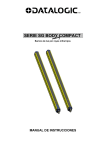
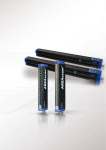

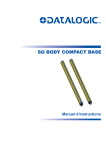

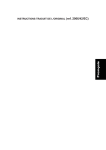
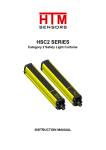

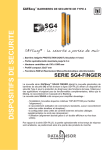
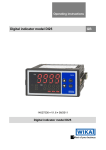
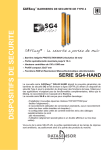
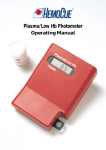

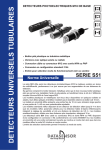

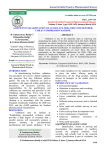

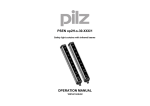


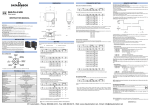
![S65Z (PDF/566Ko) [F]](http://vs1.manualzilla.com/store/data/006341200_1-213c221319c5381c5c66ab4a6642dc06-150x150.png)